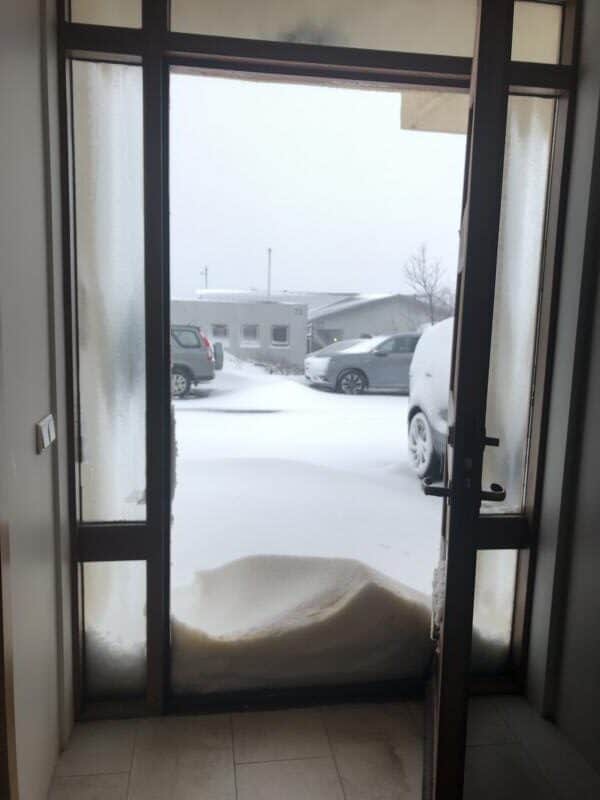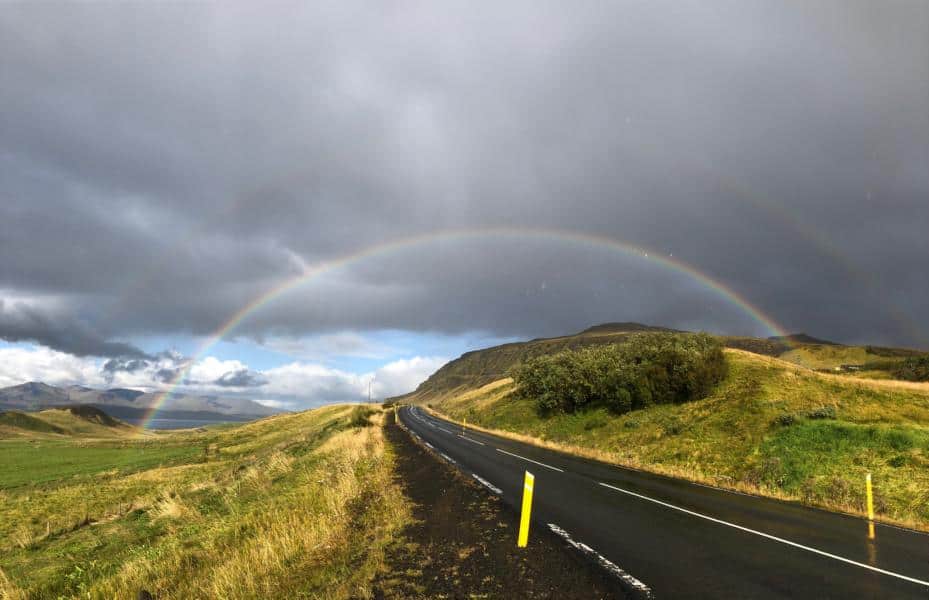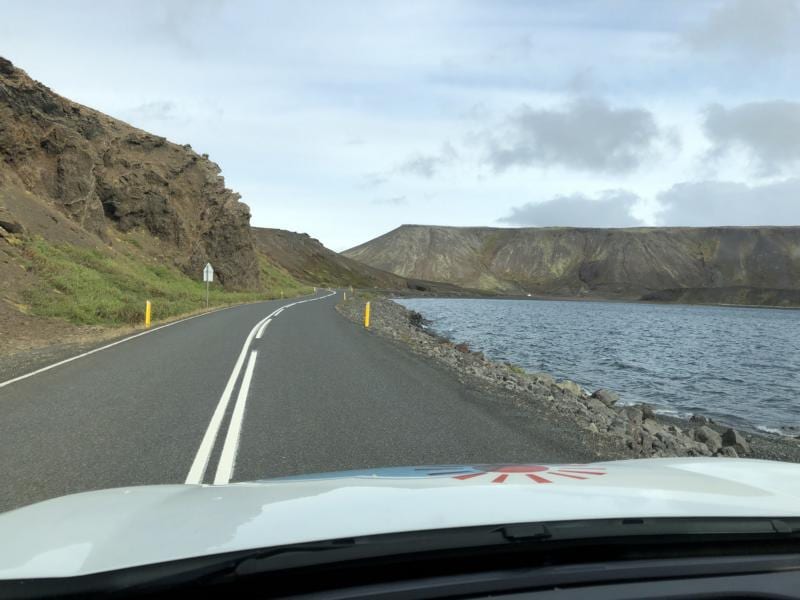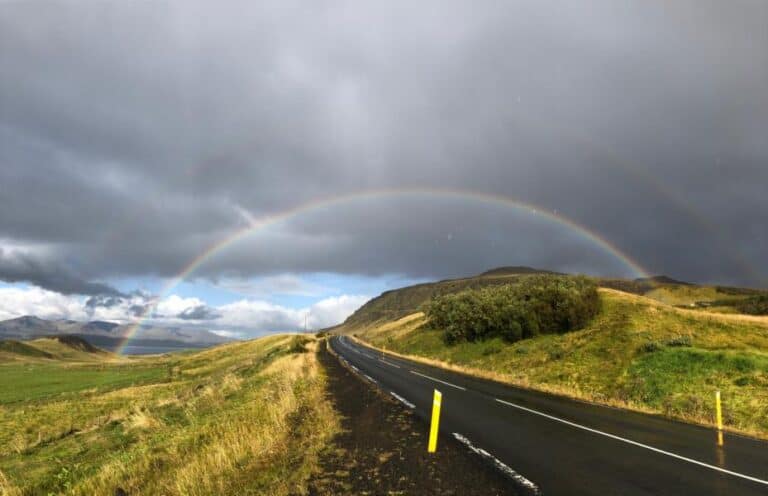Knowing the climate of your next destination helps you plan your activities and gives a good idea of what to pack. This is especially important if you’re planning an Iceland visit, as Iceland weather has been known to be unpredictable, shifting from sunny to rainy in just a few minutes. But though a lot of people expect the worst conditions, Iceland temperatures are much milder than most imagine.
At Rent.is we get a lot of questions about the best time to visit Iceland according to the weather, so here’s a general Iceland weather forecast to guide you as you plan your camper van adventure.
Iceland Climate
Iceland experiences a maritime climate best described as cold, windy, and cloudy. This is the case for most of the year despite the usual Iceland seasons of spring, summer, autumn, and winter. The cold temperatures are due to the island’s northern location and cold winds from the North Pole, but it is not as cold as other regions with the same altitude because the island lies in the path of the Gulf Stream and sits on top of one of the earth’s hot spots.
The Gulf Stream is also what causes the erratic weather as it flows along the west and south of Iceland, raising Iceland average temperatures. The northern coastal area of Iceland is colder than the south as it is not touched by this current, but it also receives less rain. Reykjavik weather is usually at a middle level in both temperature and precipitation due to its location along the west coast.

Winter in Iceland
Iceland has four seasons a year, though it might not feel that way because the weather changes all the time. Winter is between November and March and is mainly characterized by shorter hours of sunlight. The shortest day of the year is the 21st of December when there’s only about four to five hours of daylight. But these dark months are not all doom and gloom, as Icelandic winters are not as cold as one would expect. Average temperatures are warmer than Canadian or Russian winters, and even New York!
In the south areas such as in Reykjavík, the average temperature is around 0°C and can go down to -5° or up to +5°C. It snows from as early as October into late springtime in May.
Many tourists visit Iceland in winter, as it is the best time to see the ethereal Northern Lights and trek through the ice caves. Hot springs also stay bubbling all-year-round.

Summer in Iceland
Summertime in Iceland is not quite the same as summers in other parts of the world. But though temperatures remain cool and Iceland weather in summer is unpredictable, the island is still a hive of activity with festivals and national celebrations. Summers normally start in late May or early June and last until mid to late August.
While temperatures may not rise significantly, the days get longer and longer until the day of the Midnight Sun which has 24 hours of daylight. This Summer Solstice usually happens on the 21st of June, after which the hours of sunlight gradually decrease. If you’re like most people who prefer to take their camping trips in the summer, you’ll get to see more of Iceland at this time of year, due to some highland roads opening after having been closed in wintertime.

Iceland Temperatures
Iceland’s average temperature does not vary considerably between day and night, or even from season to season. The difference is more noticeable from area to area, both between day and night and winter and summer.
In winter, the average temperature in plains and coasts is around 0 °C (32 °F), though it is a few degrees colder on the Northern coast. Winter is colder in inland areas, with it dropping up to -15 °C (5 °F) in the higher areas.
Iceland summer temperatures are just slightly higher, but still cool. July and August are the warmest months, with lows of about 9 °C (48 °F) and highs of 14 °C (57 °F). On the north coast, they get up to 10/12 °C (50/54 °F).
Iceland weather is typically never hot; the highest records along the coast are 26 °C (79 °F) and 28 °C (82 °F) inland.

Iceland Wind Conditions
Though temperatures are generally not extreme, wind conditions can affect the overall feel of the day. Iceland is a very windy country. Add this to the erratic weather and you will understand why a calm day on the island is rare. The average wind speed in Iceland is 11.6 miles per hour. It slows down a little in the summer but is stronger and more constant in winter months. Katabatic winds are quite common in Iceland, so if you’re planning on taking your camper van along the Ring Road in winter, always make sure to check the road conditions and wind speed, especially on the south coast.
Explore With Rent.is
The generally level average temp in Iceland is good news for your planning, since you don’t have to limit your travel window to a few months in the year. Rent.is makes it even more comfortable for you with all Iceland camper rental vans being fully equipped with a heating system and sleeping bags.
Browse our Iceland travel guide and Iceland packing list articles for more info or, if you’re ready to book your trip, contact our team today!

